 LOUISIANA DEPARTMENT OF ENVIRONMENTAL QUALITY | Secretary Courtney J. Burdette
LOUISIANA DEPARTMENT OF ENVIRONMENTAL QUALITY | Secretary Courtney J. Burdette
 A DEPARTMENT OF THE STATE OF LOUISIANA
A DEPARTMENT OF THE STATE OF LOUISIANA
The following is a brief summary of rules to which glycol dehydrators are subject, and the test methods for determining applicability and ongoing compliance. This document does not supersede the regulations cited.
LAC 33:III.2115. Waste Gas Disposal
Applicability: Facilities with the potential to emit 50 TPY or more of VOC in non-attainment parishes, or 100 TPY or more in attainment parishes are required to install controls on vents which emit more than 18 tpy (100 lb/day).
Control Requirements: For units constructed prior to 1/20/85, a 95% VOC removal efficiency or less than 50 ppm VOC concentration is required. For units constructed after 1/20/85, a 98% VOC removal efficiency or less than 20 ppm VOC concentration is required.
Test Methods: No demonstration of control efficiency is required for combustion devices. For any other control device, test methods 18 and 25A are used to determine concentration at the inlet and outlet of the control device. Test methods for applicability determinations and control efficiency are listed in 2115.I.
LAC 33:III.Chapter 51. Comprehensive Toxic Air Pollutant Emission Control Program
Applicability: Glycol dehydrators with the potential to emit 10 TPY or more of one TAP, or 25 TPY or more of any combination of TAPs, and potential to emit above the minimum emission rates for class I and II TAPs (260 lb/yr Benzene, 20,000 lb/yr Ethyl Benzene, or 20,000 lb/yr Xylene) are required to install MACT controls.
Control Requirements: Maximum Achievable Control Technology (MACT) is required and is determined on a case-by-case basis. Louisiana MACT determination for glycol dehydrators usually requires condensation and/or combustion to achieve a removal efficiency of 98%.
Test Method: No demonstration of control efficiency is required for combustion. Test methods required for any other control system are determined on a case by case basis.
LAC 33:III.2116. Glycol Dehydrators
Applicability: Units which emit more than 9 TPY VOC, and are not subject to the two rules above are required to install controls.
Control Requirements: For units constructed prior to 10/20/94, a 70 percent reduction of VOC emissions, or an annual average exhaust temperature less than 110 F is required. For units constructed after 10/20/94, an 85 percent reduction of VOC emissions is required.
Test Method: Test methods are listed in 2116.D. For applicability and initial compliance determinations the appropriate method should be pre-approved by the Engineering Section. The Glycalc software program may be considered as an acceptable alternate method after Glycalc input information is reviewed and approved by the Engineering Section on a case by case basis.
For ongoing compliance determination the agency will require demonstration of compliance by an appropriate method in 2116.D as approved by Engineering.
NESHAP for Oil and Natural Gas Production and Natural Gas Transmission and Storage.
Applicability: Facilities with the potential to emit 10 tpy or more of one HAP or 25 tpy or more of any combination of HAPs are required to install MACT controls on glycol units which have a capacity greater than or equal to 3 MMSCFD or have Benzene emissions greater than or equal to 1 tpy. Facilities in urban areas with the potential to emit less than 10 tpy of any one HAP and less than 25 tpy of any combination of HAPs are required to install MACT controls on glycol units which have a capacity greater than or equal to 3 MMSCFD or have Benzene emissions greater than or equal to 1 tpy.
Control Requirements: A 95% HAP removal efficiency or less than 20 ppm HAP concentration is required.
Test Method: To demonstrate Benzene emissions less than 1 tpy, Glycalc software or Methods 1,2 and 18 may be used. To demonstrate control efficiency, Methods 1,2 and 18, or an alternate method may be used.